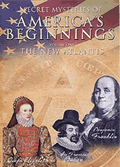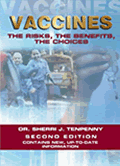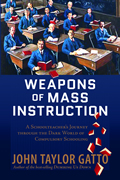JIMMYING JUSTICE: SHAKEN BABY SHAKEDOWN
By
Debra Rae
July 20, 2012
NewsWithViews.com
An amusing scene in the Oscar-winning movie, Chicago, is when attorney-turned-puppet-master Billy Flynn uses his client, Roxie, as a ventriloquist's dummy, all the while he manipulates marionette strings leading to the press. The accused (and manifestly guilty) Roxie was assured she had nothing to worry about since, in the words of Billy, “It's all a three ring circus”; and she’s working with “a star.” To silence “the truth above the roar,” Star Billy gave the jury “the old razzle-dazzle” and “flimflam flummox,” as go the lyrics.[1]
No Worries? No Way!
While entertaining in a Broadway musical, or Hollywood extravaganza, the fun ends when the likes of Billy Flynn set out to prosecute you or your loved one. Unlike Roxie, Barbara Schrock (Indiana),[2] Trudy Rueda (Virginia),[3] and Audrey Edmunds (Wisconsin)[4] received no such assurance from Billy.
Presently, the first two are serving lengthy prison sentences. Before overturn of her conviction for allegedly shaking to death a seven-month-old baby, the latter mother of three served eleven years. Thankfully, the pathologist who once testified against Edmunds has since found research to support belief that a “lucid interval is a distinct, discomforting but real possibility.” No longer could he precisely time an injury that purportedly caused the baby’s death; no longer could Edmunds be held accountable.[5]
Caregiver for her nephew, Julie Baumer was convicted of child abuse but, at a second trial, she, too, was found innocent. One juror explained, “It came down to this: For the prosecution to be right, I was required to believe that a woman with no history or indication of violent tendencies or instability hit this baby’s head so hard that she fractured his skull and shook him so hard that she caused extensive brain damage, while leaving no marks on him. That just didn’t make a lot of sense to me.”[6]
Nor did it make sense in the Schrock and Rueda cases, but neither has yet been vindicated. Even the “victim’s” grandmother Elaine Schrock, RN faced charges that eventually were dismissed. While never convicted of any crime, Elaine was denied subsequent renewal of her teaching and nursing license for no other reason than having been charged. Her daughter Barb, husband Dan, and their grandchildren were ripped to shreds by “if-it-bleeds-it-leads” media coverage and courtroom shenanigans.[7]
I Am SBS; Hear Me Roar
There’s no more heart-rending crime than child abuse. Protecting the innocent was, is, and must remain of paramount importance. Accordingly, in the 1980s, the term “shaken-baby syndrome” (SBS) came into broad usage; and a national prevention and awareness campaign ensued. As the diagnosis of shaken-baby syndrome gained further ground in medicine, prosecutors jumped at the chance to bring charges based on it; but not all were honorable defenders of vulnerable children.[8] Indeed, the syndrome promised an easy win for the Billy Flynns of this world.
When an infant or child shows signs of possible abuse, someone’s got to pay. Society demands it. More likely than not, that someone is the primary caregiver. No prior criminal record, no witnesses, no physical evidence of battery are required. If the suspect was with the victim for an appreciable duration of arbitrary time, voilà! His name is pulled from the pool of possible perpetrators.[9]
Once a plausible patsy is fingered, it’s a piece-a-cake to “fit” the suspect’s interactions with the child to the theory of SBS. Even if that “fit” mirrors an evil stepsister’s squeezing into Cinderella’s glass slipper, Star Billy banks on the premise that perception is king; and SBS convictions require no “hard” evidence to convict.
Given an automatic presumption of guilt until proven innocent, the outcome is a slam-dunk. Armed with the SBS triad of internal symptoms—hemorrhage (subdural and retinal) coupled with brain swelling—a puppet-master prosecutor razzle-dazzles media hawks. He need only exploit the power of emotional manipulation, say, by flashing photos of the battered child.
With focus on this telling triad, our Billy Flynn downplays facts—i.e., that “victims” experienced difficult births, ongoing breathing problems, seizures (even comas), and infections—and overlooks key evidence—i.e., that “victims” show no external marks or documented history of cuts, bruises, burns, or fractures.
To drown out any semblance of reasonable doubt, Billy methodologically unleashes a deluge of circumstantial evidence. By melding incomprehensible medical details with disputed theories and timelines—and by pitting witnesses and juries against one another—Billy gives ‘em “the old flimflam flummox.”
His winning strategy is to imagine for a captive audience some alleged moment when an otherwise loving, responsible caregiver snaps and, in a fit of uncontrollable frenzy, viciously shakes the vulnerable child entrusted to his care. Well meaning doctors testify that shaking could generate the same terrible force as throwing a child from a multi-story window. For tap-dancing Billy, this gotcha’ moment is hideously sweet.
Guilty Beyond a Shadow of Doubt?
In Schrocks’ case, a pediatric neuroradiologist, Dr. Barnes from Stanford Medical School, identified the alleged victim’s anomaly as “brain damage, the type that occurs during the pregnancy, or in a premature infant.” This published expert on brain imaging further pinpointed the timing of damage—“either during pregnancy up to the time [the infant] spent in the Neonatal Intensive Care Unit [following premature birth].”
Having
served on several national child abuse committees, Dr. Barnes’
categorical conclusion was this: Neither the mother, nor the grandmother,
was responsible. Yet another pediatric radiologist connected with Stanford
addressed bone anomalies on the body scan. In an email to Schrocks,
she described “metaphyseal irregularities” at the alleged
victim’s wrists, knees and ankle. These, she explained, are “the
classic locations and classic metaphyseal changes we see in metabolic
bone disease.”
Nevertheless, bereft of hugely significant Stanford findings, as those
stated above, and themselves lacking medical expertise, a lay jury was
convinced otherwise solely on the basis of circumstantial evidence.
Guilty beyond a shadow of a doubt? Hardly.
While there’s no exact count of shaken-baby prosecutions, law-enforcement authorities estimate hundreds of SBS incidents each year.
Exoneration—Too Little, Too Late for the Wrongly Accused
True, shaken-baby cases are haunted by the enormous repercussions of getting it wrong. On the one hand is danger to a baby; on the other, conviction of an innocent adult. If you are Billy Flynn, neither much matters. But, for most, protection of an infant trumps all. If one must err, better to err on the side of defenseless babies and children. Right?
Not necessarily so. One wrongful imprisonment is one too many. A former prosecutor and a law professor at DePaul, Deborah Tuerkheimer wrote a New York Times Op-Ed warning of wrongful convictions. She also called on the National Academy of Sciences to referee the shaken-baby-syndrome dispute.[10]
Even the pediatric neurosurgeon credited with the SBS theory has expressed “second thoughts” about how the diagnosis is used in courtrooms; and pediatric radiologist Patrick Barnes admitted, “I’d been in lockstep with the child-abuse establishment for twenty years,” yet “for the first time, I saw that there were well-qualified experts on the other side giving opinions I’d never heard, that I knew nothing about.” While ignoring salient facts, Billy breezes over the growing number of doctors who offer alternate explanations for the triad of symptoms associated with SBS.[11]
For
good reason defense-side doctors, particularly forensic pathologists,
believe that in criminal cases physicians should give more weight to
possibilities of a stroke caused by an infection, bleeding disorders,
metabolic bone disease, brittle bones and the like. Case in point: A
licensed daycare provider, Pam Jacobazzi was convicted of having shaken
to death a ten-month-old.
Thereafter, new evidence revealed that the child had a naturally occurring
disease that caused bleeding within the brain. Medical science now recognizes
that sickle cell anemia caused the same symptoms of subdural and retinal
bleeding that were mistaken for child abuse.[12]
Many doctors who testify for the defense agree that, in theory, shaking could cause the triad of SBS symptoms, but only if there is an injury to the neck or spinal cord where the breathing center is. Absence of said injury renders shaken-baby cases particularly fraught. Furthermore, a British neuropathologist, Jennian Geddes, found that most babies studied with the triad of shaken-baby symptoms suffered from a lack of blood caused by oxygen deprivation to the brain’s cells. No shaking required.[13]
The Innocence Project, A Global Concern
In Britain, after one mother’s shaken-baby conviction was overturned, Attorney General Peter Goldsmith reviewed 88 additional cases and, in 2006, announced doubts about three of the convictions based solely on the presumed to be “tried-and-true” triad. In the other cases, Goldsmith noted add-on evidence pointing to the defendant’s guilt.[14]
In 2008, the Wisconsin Court of Appeals documented “fierce disagreement” among doctors about the shaken-baby diagnosis, signaling “a shift in mainstream medical opinion.”[15] That same year, the Ontario government reviewed 142 shaken-baby cases because of “the scientific uncertainty that has come to characterize that diagnosis.”[16]
| Subscribe to the NewsWithViews Daily News Alerts! |
While horrors of being falsely accused, convicted, and imprisoned cannot ever be erased, a group of lawyers has succeeded in exonerating hundreds of defendants—this, based on DNA evidence. Presently, they’re mounting 20 to 25 appeals of shaken-baby convictions.
“No one wants child abuse,” explains Keith Findley, lawyer for the Wisconsin Innocence Project. “But we should not be prosecuting and convicting people in shaken-baby cases right now based on the triad of symptoms without other evidence of abuse. If the medical community can’t agree about all the conflicting data and research, how is a jury supposed to reach a conclusion that’s beyond a reasonable doubt?”[17]
� 2012 Debra Rae - All Rights Reserved
Footnotes:
1.
ST
Lyrics
2.
Barbara Schrock v. State of Indiana (NFP).
3.
Trudy Eliana Munoz Rueda v. Commonwealth of Virginia.
4.
State of Wisconsin v. Audrey A. Edmonds.
5.
State
of Wisconsin, Dade County
6.
People of the State of Michigan v. Julie Christine Lael Baumer.
7.
Dan Schrock. Journey with “Justice”: Our Family’s
Expereince with “Shaken Baby” Allegations (Morgan Hill,
CA: Bookstand Publishing, 2012), 340.
8.
Shaken
Baby Syndrome
9.
Practicing neurosurgeon Ronald Uscinski, M.D., published his view in
a peer reviewed a journal: "[I]n 1987 and again in 2003, careful
laboratory investigations based on the known biomechanics of head injuries
showed that human beings cannot achieve the necessary accelerations
for causing intracranial injury in infants by manual shaking alone,
but that impact is required. Moreover, after more than 33 years, despite
numerous reports of series of case studies, an actual witnessed incident
in which an infant sustained an intracranial injury as a result of shaking
alone has yet to be documented."
10.
Tuerkheimer, Deborah, The Next Innocence Project: Shaken Baby Syndrome
and the Criminal Courts (August 6, 2009). Washington University
Law Review, Vol. 87, No. 1, 2009. Available
at SSRN.
11.
NPR - Rethinking
Shaken Baby Syndrome
12.
Illinoise
Innocence Project Works To Free Pam Jacobazzi in Alledged Shaken Baby
Case.
13.
Geddes, Jennian F, Nonaccidental Trauma: Clinical Aspects and Epidemiology
of Child Abuse (2009). Pediatric Radiology (2009), 39(7):759; author
reply 760-1.
14.
Women
News Links: Shaken Baby Syndrome
15.
Shaken-Baby
Syndrome Faces New Questions in Court.
16.
Shaken
Baby Death Review.
17.
Innocence Project

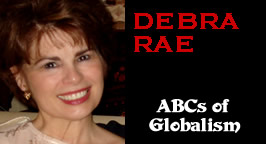



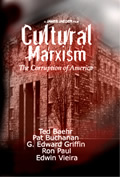
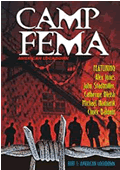




 Share
This Article
Share
This Article



